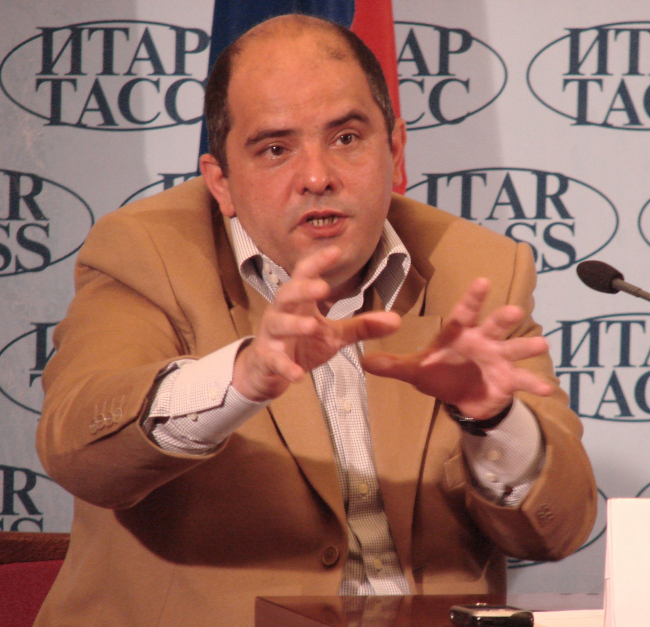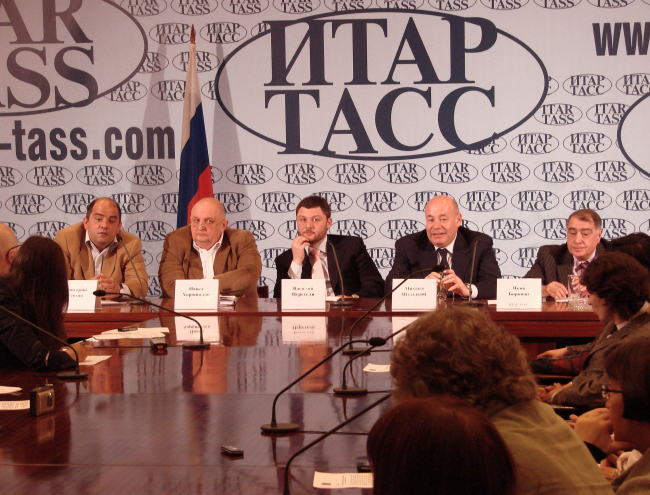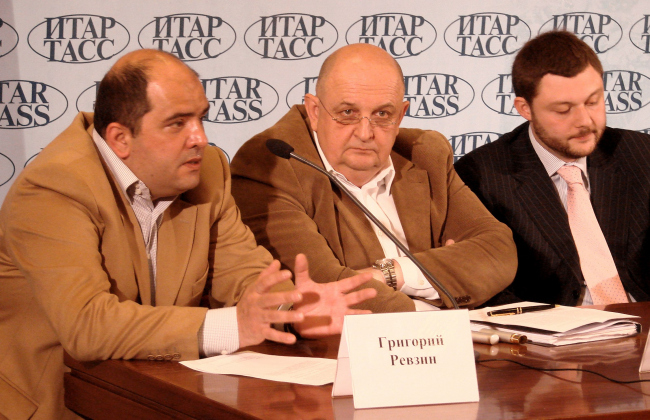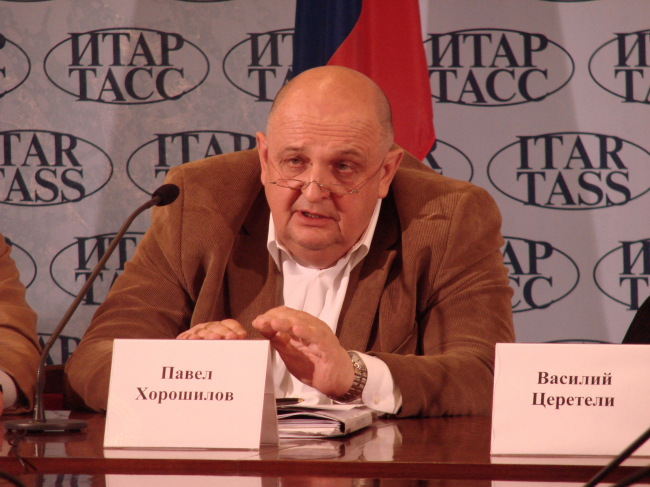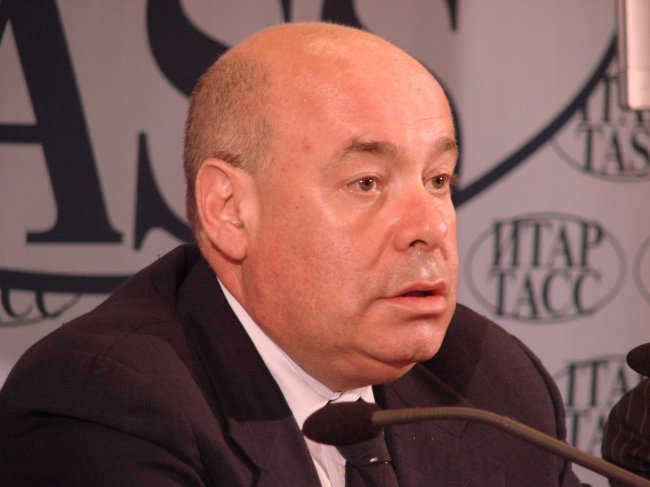|
Published on Archi.ru (https://archi.ru) |
|
| 13.05.2008 | |
|
The concept of Russia’s pavilion at the Venice biennale has been announced |
|
|
Julia Tarabarina |
|
|
At the press conference held today there has been announced the idea of the exposition of Russia’s pavilion at the 11th Venice bienalle. The author of the idea is Gregory Revzin, for the first time he decided to show modern architecture at biennale, actual constructions and projects that will be realized Modern architecture – constructions and projects by Russian and foreign architects will be presented in the Russia’s pavilion at the 11th bienalle in Venice. It might seem there is nothing simplier than presenting what is being constructed at the moment in the country. For the 28 year history of the Venice biennale Russia have never done that. As a rule, trying to be in character with the prestigious international exhibition, in Russia’s pavilion there were conceptual expositions – mostly presenting all we had: visionary architecture, probably, most delicate and favorite of the critics. At the last biennale Russia was presented by Alexander Brodsky’s installation, and in 2004 by a student studio Workshop Russia. This year the curators for the first time decided to break the tradition and show not the past or future, not dreams, not hopes, not recollections, but most possibly – the reality. The author of the idea, Gregory Revzin, one of the two curators of the Russian pavilion of the 11th architectural biennale in Venice, famous Russian architectural critic, told about that at today’s press-conference. 15 Russian and 10 foreign architects take part in the main exposition of the pavilion. Gregory Revzin picked the participators regarding how they popular in media, he invited the architects who are most talked about in press. Each one will be presented by a prototype of one construction or a project. Remarkably, the exposition presents together Russian and foreign architects, famous and not, equaling them all. One of the Gregory Revzin’s aims is to compare the art of “varangians” and “our” architects visually, the curator says he imagined that many times. Gregory Revzin is sure the Russian architects will not lose but probably will be the best. The curator talked about one of the peculiarities in Russia at the press-conference. The Russian architects have more realized constructions. But in the process of building they change considerably – the project must be approved; they improve and ruin, and change it. To save anything an author has to strive for their project. Russian architects think of this strive as a part of their job, natural part of the profession. Foreigners do not want to strive, build. So foreign projects more often remain as concept, and so they look more impressive. Gregory Revzin showed a clear example: the two architects, Sergey Skuratov and Erick van Egeraat have designed two different residential skyscrapers based on the common idea of a spiral-like twirl of the building’s volume. Such buildings are expensive, and the both architects had problems with developers. But Sergey Skuratov made changes in the project achieving the effect of a twirl of the carcass through the more simple method. Erick van Egeraat has legal proceedings. The first has almost finished construction of his building, the other one has just recovered. So, the curator resumed the positions changed – before Russian visionary architects used to picture beautiful fantasies, and foreign architects were striving with practice, and today foreigners in Russia got the role of visionary architects who draw nice pictures and Russians (also for former visionary architects) realize their dreams most possibly. Well, the main exposition is the profile of architectural process, a kind of photofinish of the situation of 2008 through the eyes of a famous Russian critic. Along with prototypes, art of each exposition participant will be more closely illustrated on screens and in electronic catalogue. This concept, for the first time in history of Russian architectural exhibitions in Venice, is focused on displaying reality, and does not totally tune to the slogan of 11th Biennale, announced by its curator, Aaron Betsky, a famous American architectural critic. The words are: «Out there. Architecture beyond the building». In the Russia’s pavilion they will show buildings, quite lot of buildings, risking not to develop the idea. Though it is true that as a rule mottos of biennale are not so fine for demonstrating buildings as such, leading thoughts somewhere beyond. Betsky’s idea seems to be a quintessence of this tendency, but before there were Bardette’s “cities”, Foster’s “metamorphoses”, Fuksas’ “ethics”. In short, it was decided not to change the main idea of the pavilion. Must add Gregory Revzin becomes curator of Russia’s pavilion for the second time. First, in 2000, he worked not holding to the main idea, but against it. Massimiliano Fuksas asked to think over the “ethics instead of aesthetics”, in Russia’s pavilion there was aesthetic stairs to the sky by Mikhail Filippov and aesthetic photographs by Ilya Utkin, he was given a special award for them. This was the only time when Russia’s pavilion was awarded at biennale in Venice. So, looking back, we see that this is not the first time when Gregory Revzin does not develop the idea of biennale. He does not consider this as a principal. At the conference someone said the idea to show “true architecture” had appeared before Betsky announced it. National pavilions of other countries responded the motto differently. Trying to go somewhere beyond, Germany made tender for the most ecological project, American pavilion will probably present some student projects. Exposition of the Russia’s pavilion decided not to fully stick to the main idea, but make it differently. Gregory Revzin invited Nikolay Polissky, a famous landscape architect-artist, an anchoret of Nikola-Lenivets, a village in Kaluzhsk, the author of army of snowmen, ziggurat made of hay, imperial border of wood supports and so on. He greatly explains his way of thoughts – he explained it as one critic to another. The author of the motto, Aaron Betsky, has also the book named “Architecture beyond the building”. The book says that each territory is the space that wants to be built over. So, reasons Revzin, Russia is the huge and mostly vacant space that wants to be developed. Nikolay Polissky in his giant landscape fancies shows desire of Russian land to be built over – his objects are not architecture, but images and buds that look like towers, walls, houses. But they all beyond a building, no one can say that Polissky constructs buildings. Here Polissky is an artist-medium, who lives back in the country and catches that desire of the vacant territory to be built over. In Russia there is much of such territory, so, the Russian vacancy – as largest in the world – is the answer for Betsky reasonings of architecture beyond a building. This part of the exhibition – from one side is conceptual, from the other it is artistic – will be in the lower storey and will be an art and theory basis of the exposition. Upper, on the second storey, there will be a “buildover” – result of vacancy’s whish to be filled. There comes out the building boom. Architecture comes out of that building boom. We show it. The concept is neat, it begins with Betsky’s theory, applies them to Russia, finds there a proper medium, brings all that to reality he wants to show. The concept explains everything logically, if one reads and thinks carefully. There is one undeveloped issue left – will anyone ever think carefully. Well, this directly depends on creativity of the exhibition. Yet design of the exposition is secret, Pavel Khoroshilov, the second curator of the pavilion said so. Below there is a list of participants of the exposition in Russia’s pavilion: Alexander Asadov Alexey Bavykin Mikhail Belov Andrey Bokov Yury Grigoryan Sergey Kiselev Boris Levyant Nikolay Lyzlov Vladimir Plotkin Aleksander Skokan Sergey Skuratoy Sergey Tkachenko Mihail Filippov Mihail Hazanov Nikita Yavein Norman Foster, UK Dominique Perrault, France Peter Schweger, Sergey Tchoban, Germany Erick van Egeraat, Holland Zaha Hadid, UK Thomas Leeser, USA David Adjaye, London Ricardo Bofill, Spain Jean Nouvel, France NoneNoneNoneNoneNone |
|
